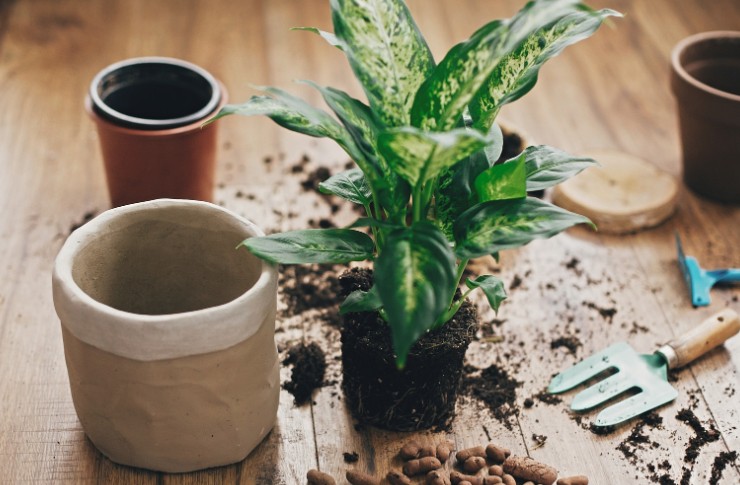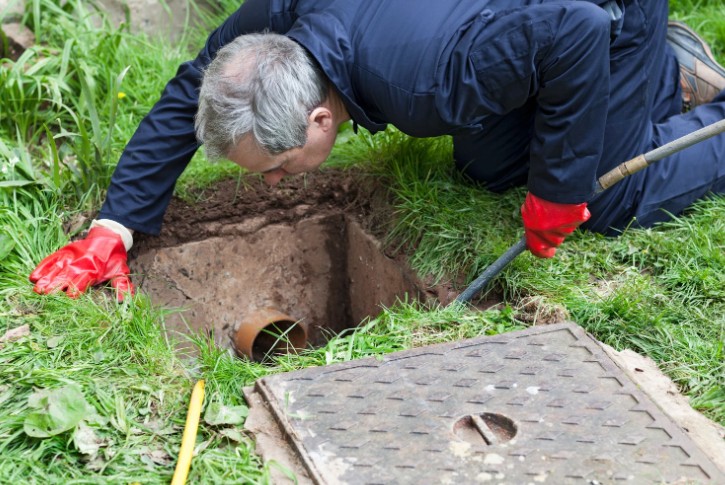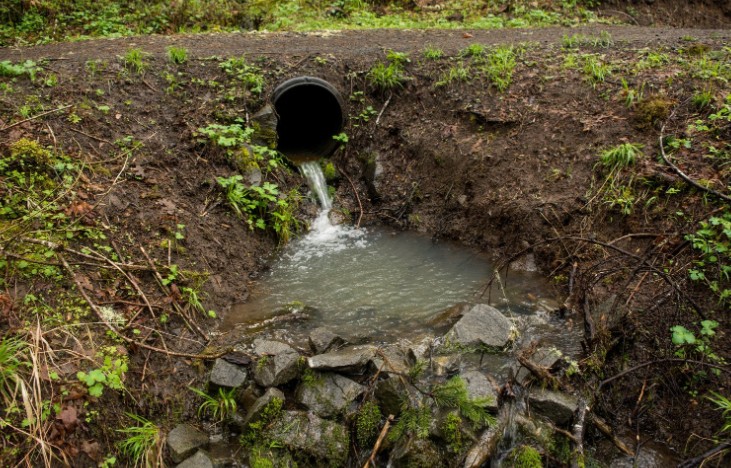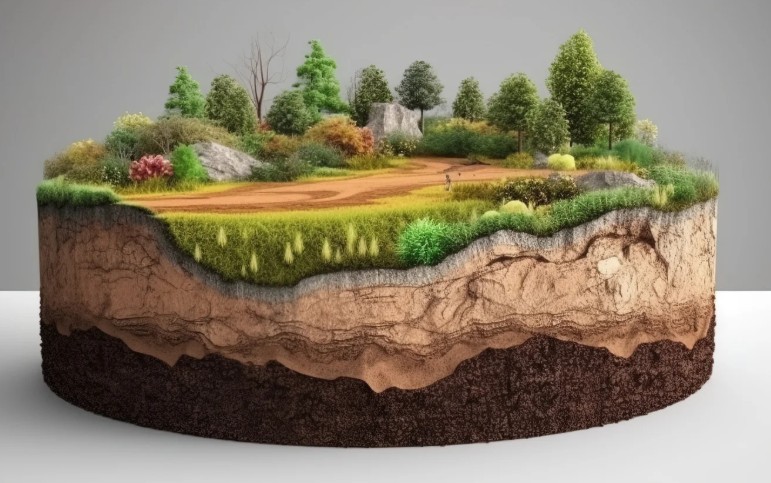- Why Is Clay Soil a Drainage Problem in UK Lawns?
- Signs of poor drainage in a lawn
- How Do I Test If My Lawn Has Poor Drainage?
- How to Improve Drainage in Clay Soil Lawn UK? – Step-by-Step
- What Materials Help Improve Drainage in a Clay Lawn?
- Can Lawn Drainage Be Fixed Permanently?
- Quick Tips: How I Maintain a Healthier Lawn in Clay Soil?
- Conclusion: Take Control of Your Clay Lawn Drainage
- FAQs About How to Improve Drainage in Clay Soil Lawn UK
If you’ve ever stepped onto your lawn after a rainy spell only to find squelchy, muddy ground beneath your feet — you’re likely dealing with clay soil.
I’ve faced this exact issue in my garden here in the UK, where persistent rainfall and compact soil lead to waterlogged lawns that simply refuse to dry out.
Thankfully, through trial, error, and a lot of hands-on experience, I’ve learned exactly how to improve drainage in clay soil lawn UK — and in this gardener’s guide, I’ll walk you through it all step by step.
Why Is Clay Soil a Drainage Problem in UK Lawns?
What makes clay soil different?
Clay soil has very fine particles which bind together deeply. Unlike sandy or loamy soil, which allow water to pass through easily, clay soil holds onto moisture for far too long.
The structure is dense and sticky, making it prone to compaction and reducing the number of air pockets that roots need for healthy growth. When dry, it hardens and breaks; when damp, it turns into a heavy, slick mess.
How does UK weather worsen the issue?
The UK’s maritime climate adds to the difficulty. Frequent rainfall, especially in autumn and winter, keeps lawns saturated.
Because clay soil drains so slowly, each rainfall event adds to the problem — the soil becomes saturated before it has time to dry out. This leads to poor root development, increased moss growth, and overall poor lawn health.
Signs of poor drainage in a lawn
Before I knew my problem was due to clay, I started noticing symptoms that didn’t go away with standard lawn care.
Standing water remained long after rain, the grass was turning yellow in some places and brown in others, and I could hear the ground squelch when I walked across it. These were all classic signs of drainage issues in clay soil.
How Do I Test If My Lawn Has Poor Drainage?
Simple water test you can do at home
One of the easiest ways to confirm whether your lawn has poor drainage is the water infiltration test. I simply dig a small hole around 30 cm deep and fill it with water.
After letting it drain fully once, I fill it again and time how long it takes to empty. If it takes more than 4 hours to drain, then the soil is not draining properly — a clear indication of clay or compacted soil structure.
Observing puddles and waterlogging patterns
Visual cues are just as important. After heavy rain, I take a walk across the lawn and observe how water behaves.
If puddles remain for days, or certain areas always seem wetter than others, this points to uneven drainage and likely areas of compacted clay that need urgent attention.
Checking for soil compaction and hardness
Another simple check is the “fork test.” If I can’t easily push a garden fork 10–15 cm into the lawn, the soil is compacted.
Compacted clay is one of the biggest culprits of drainage problems — it creates a tight, impermeable layer that stops water from moving down into the soil profile.
How to Improve Drainage in Clay Soil Lawn UK? – Step-by-Step
Improving drainage in clay soil isn’t that simple and can be an overnight fix. It’s a sequential practice and intrusion that work together over time.
I’ve learned that consistency is key, and by following the steps below, I’ve turned my waterlogged lawn into a healthy, green oasis.
1. Aerating compacted lawns – How I use a garden aerator effectively
Aeration is the first thing I do when tackling drainage issues. I use a manual hollow-tine aerator to remove plugs of soil across the lawn.
This generates open channels which permits air and water to penetrate deep into the soil. I aerate once in the spring and again in autumn.
Aeration not only relieves compaction but also encourages root growth, which naturally improves the soil’s internal structure.
2. Topdressing with sand and compost – Improving soil structure
Immediately after aerating, I apply a topdressing mix to fill in the holes and improve drainage. My go-to blend is roughly 70% horticultural sand and 30% well-rotted compost.
The sand keeps the soil loose and improves porosity, while the compost adds organic matter and nutrients.
I roll out the mix uniformly across the lawn, brush it in with a stiff broom or lawn lute. This method helps integrate the material into the existing clay and gradually changes its composition over time.
3. Incorporating organic matter – Why it’s essential for clay soils
Clay soil desperately lacks organic content. By regularly incorporating leaf mold, composted manure, and garden compost, I’ve managed to loosen the structure of my soil and encourage better water movement.
Organic matter acts like a sponge — it holds water when needed but also allows excess to drain away.
It also boosts microbial activity, which breaks down the clay and builds healthier soil from within. I usually apply organic material in autumn, allowing it to settle and enrich the soil over winter.
4. Installing drainage channels or soakaways – When natural solutions aren’t enough
Sometimes, especially in large or low-lying lawns, natural remedies aren’t sufficient. In these cases, I’ve installed French drains and soakaway pits.
A French drain is a trench filled with gravel and a perforated pipe that redirects water away from waterlogged areas. Soakaways collect and disperse water underground in a controlled manner.
These methods are more involved but offer a long-term fix when regular aeration and topdressing don’t quite solve the problem.
What Materials Help Improve Drainage in a Clay Lawn?
Understanding which materials to use — and how to use them — has made all the difference in my lawn’s recovery.
Comparing topdressing materials – sand, compost, loam
I’ve created a helpful comparison table based on my experience:
| Material | Drainage Benefit | When I Use It |
| Horticultural Sand | Excellent | After aeration to improve porosity |
| Compost | Good | Autumn application for organic matter |
| Sandy Loam | Moderate | General topdressing for mild improvements |
Each material has its role. Blending them correctly is necessary to unbolt the benefits.
Organic amendments I recommend
My favourite materials to work into clay include:
- Composted horse manure – rich in nutrients and loosens soil
- Leaf mold – awesome for better water movement and microbial life
- Homemade compost – easy to access and full of beneficial organisms
These amendments break down slowly and continue to improve the soil long after application.
Avoiding common mistakes
One mistake I learned the hard way: don’t add gravel directly into clay soil. It can trap water above the gravel layer instead of helping it drain, creating worse waterlogging than before.
Stick with organic solutions unless you’re creating engineered drainage systems.
Can Lawn Drainage Be Fixed Permanently?
The truth about long-term solutions
It’s important to understand that while you may never fully change clay soil into sandy loam, you can greatly improve its structure and performance.
With the right combination of aeration, topdressing, and organic matter, I’ve seen my lawn transform from swampy to strong in under two seasons.
Ongoing maintenance to prevent re-compaction
Clay soil loves to compact again if neglected. That’s why I aerate at least once a year and keep up with regular topdressing.
I also try to avoid walking on the lawn during or after heavy rain, which prevents the soil from getting pressed down again.
Seasonal adjustments – What I do in autumn and spring
In autumn, I focus on feeding the soil — I apply compost and mulch to boost nutrients and support overwintering microbes.
In spring, I aerate and topdress to encourage fresh growth and drainage readiness before the rainy season returns.
Quick Tips: How I Maintain a Healthier Lawn in Clay Soil?
Over time, I’ve developed a system for keeping my clay-based lawn thriving:
- I water deeply but infrequently, to train roots to grow downward
- I mow with sharp blades, especially after rainfall, to avoid damaging soggy grass
- I replant bald patches with clay-tolerant grass varieties such as perennial ryegrass & tall fescue
These small habits add up and help maintain all the drainage work I’ve done.
Conclusion: Take Control of Your Clay Lawn Drainage
Improving a lawn with clay soil in the UK takes effort, but it’s absolutely doable. I’ve personally seen dramatic results by committing to regular aeration, topdressing with the right materials, and consistently adding organic matter.
It’s a long-term investment, but the payoff — a healthy, green, and resilient lawn — is well worth it.
If you follow these steps on how to improve drainage in clay soil lawn uk and stay consistent, I promise your lawn will begin to reward your effort with stronger growth, better drainage, and fewer muddy surprises after rain.
FAQs About How to Improve Drainage in Clay Soil Lawn UK
1. Should I dig up and replace clay soil?
Only in extreme situations. It’s far more cost-effective and environmentally friendly to work with the existing soil using the methods I’ve outlined above.
2. How long does it take to see improvements?
Aeration and topdressing can yield visible results in a few weeks, but full transformation often takes a full year or more of consistent care. Patience is key.
3. Can I lay turf on clay without fixing drainage?
You can, but I wouldn’t recommend it. The turf might look good initially, but it won’t thrive unless you’ve addressed the underlying drainage issues. It’s better to spend time improving the soil first.





0 Comments